This website uses cookies so that we can provide you with the best user experience possible. Cookie information is stored in your browser and performs functions such as recognising you when you return to our website and helping our team to understand which sections of the website you find most interesting and useful.
Time well spent: how to make your own watch
By Teresa Levonian Cole | 16 May 2022 | Lifestyle
As Watches & Wonders finally returned to Geneva, we joined Initium for a watchmaking course in the horological heart of Switzerland
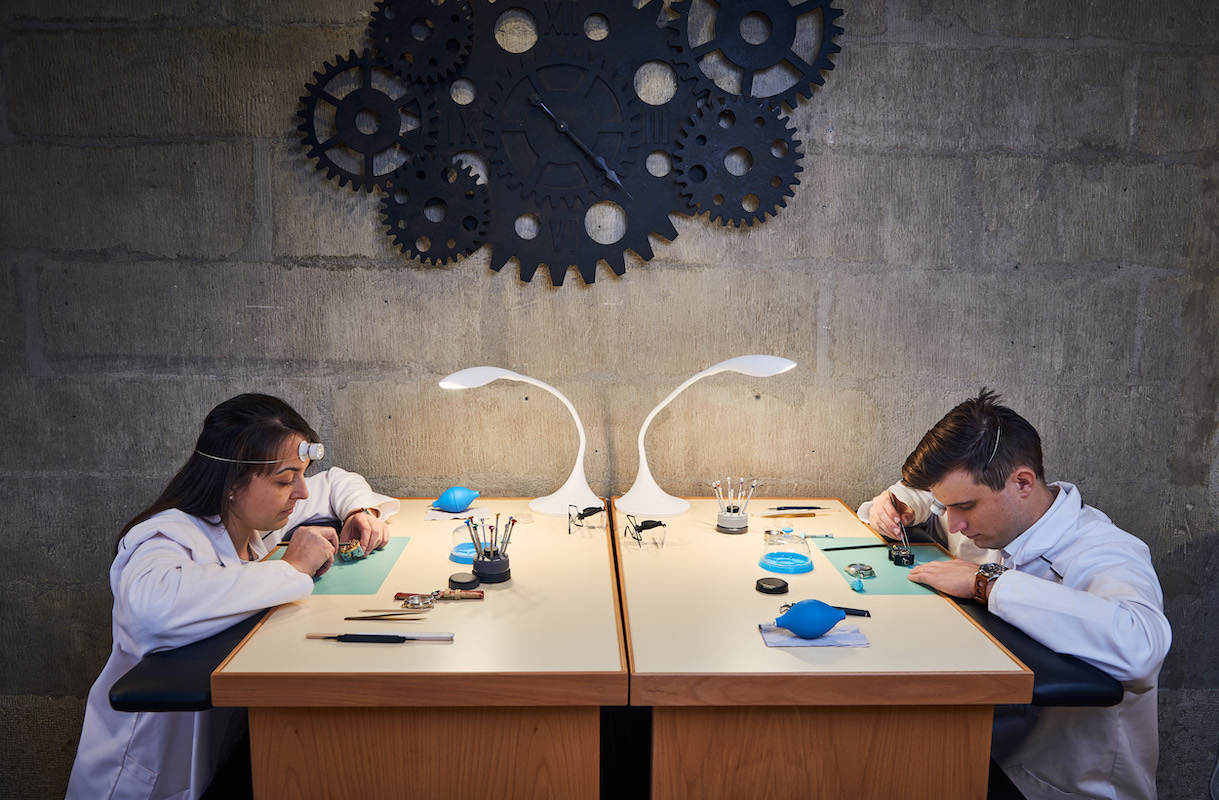
With my chin the mandatory fist-height above the work bench, forearms resting on the table, glasses and magnifiers perched on my nose, and bright light focused on the object
of my attention, I still struggled to see the screw in my grip – never mind the infinitesimally tiny slot into which I was supposed to insert a tool. Not for the first time, I wondered at the skill of those 18th-century cabinotiers who – without the aids of modern science – worked on the upper floors of buildings with nothing but natural daylight to assist them. It speaks volumes for the science of optics at the time.
I had enrolled on a one-day, one-on-one watchmaking course at Initium, located in a 17th-century building in the Old City of Geneva, a stone’s throw from where the French theologian Jean Calvin lived from 1543 until his death in 1564. It is a delicious historical irony that luxury watchmaking should have flourished in Geneva, thanks largely to this austere Protestant reformer’s interdiction on luxury goods. As jewellers, goldsmiths and enamellers sought an acceptable outlet for their skills in 16th-century Geneva, they found it in watchmaking – because timepieces, having both a practical and moral function, were exempt from Calvin’s ban.
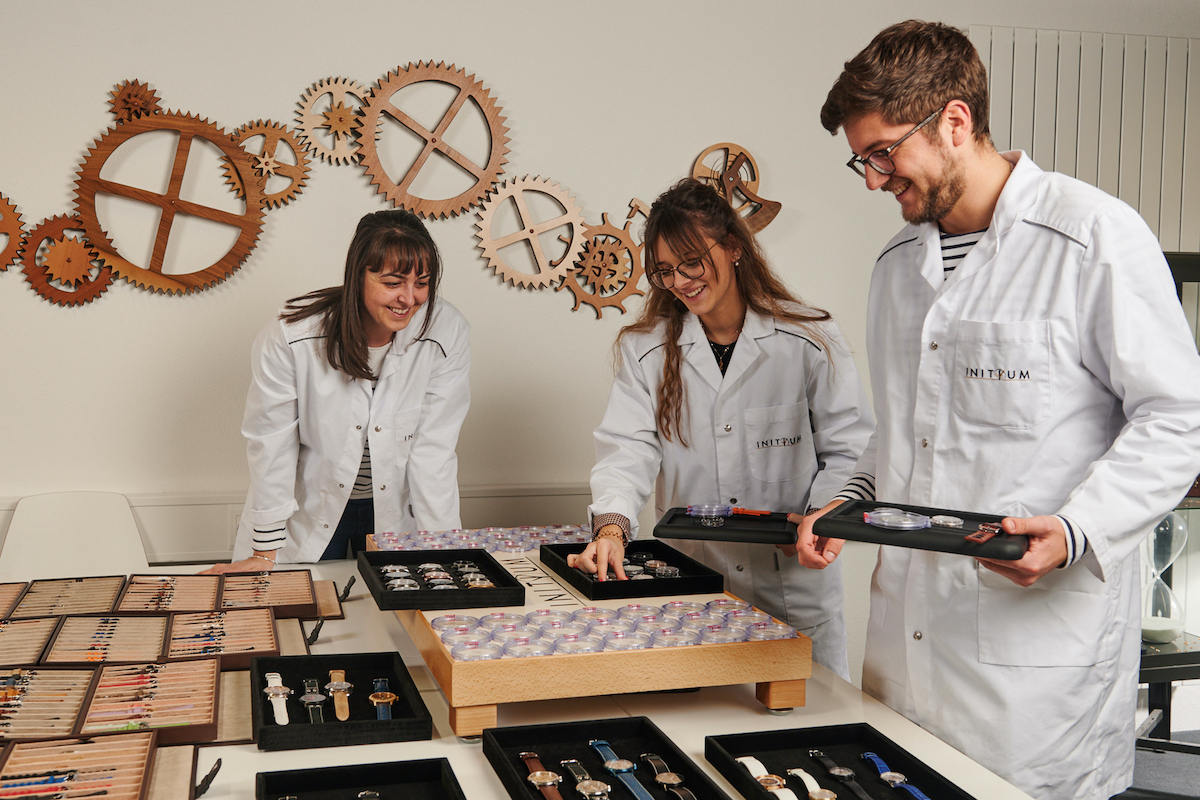
A visit to the Patek Philippe museum is proof of how adept these skilled craftsmen became at stretching the rules, from endowing timepieces with everything from jewels to miniature images of their semi-naked patrons in mythological guise, to creating warbling avian automata clad in feathers plucked from an unfortunate hummingbird.
But it was the exhibit of Patek Philippe’s own Calibre 89, with its 1,728 components and 33 ‘complications’, that piqued my curiosity about what lay behind a beautiful dial. To help unravel the mystery, Initium currently offers three courses, lasting from three to eight hours in duration, that provide an introduction to the history and theory of watchmaking and culminate in your dismantling and reassembling a basic mechanical movement: either an ETA 6497 calibre manual movement, 36.6mm in diameter, or an ETA 2892 automatic movement.
The two longer courses additionally allow you to design and assemble your own watch, which, for an inclusive course price beginning at CHF 1,990, you can then take home. Horologist Fabiano Pericles (who numbers Patek Philippe, Rolex and Vacheron Constantin as clients) was my mentor for the day, spiriting me through 6,000 years of horological history through to the invention of the (whisper the name) quartz movement in 1969.
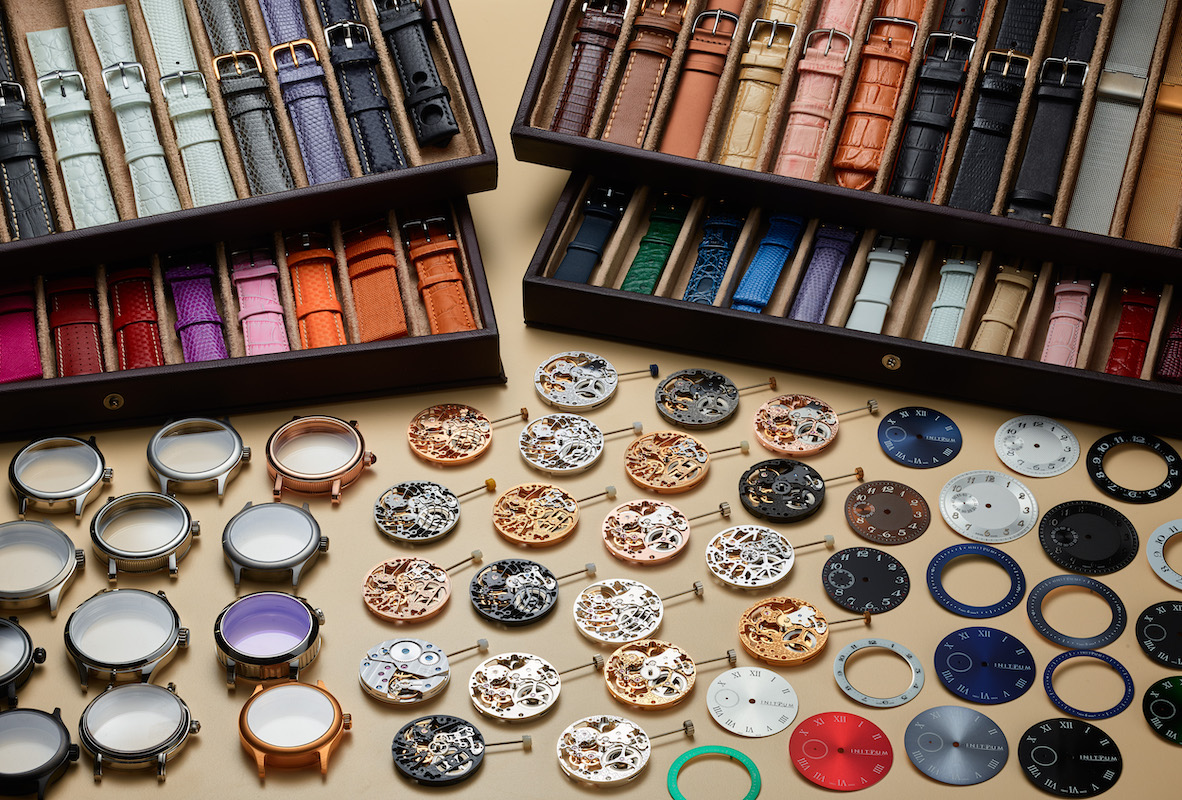
Beginning with the Gnomon of Chaldea (a sundial) and with passing reference to the 1st- century BC Antikythera Clock – the first mechanical device to track astronomical phenomena – we soon reached the weight clocks that appeared on public buildings during the Middle Ages. Things picked up in the mid-17th century, with the appearance of the minute hand for the first time, and the invention of the balance spring, which would revolutionise watchmaking. By 1810, the legendary Abraham-Louis Breguet (referred to, incidentally, in the works of Stendhal, Balzac and Pushkin) had made the first ever wristwatch, destined for the Queen of Naples.
Diagrams illustrating the parts of a mechanical watch, on both its movement and dial sides, then appeared on a screen – a riot of barrel, ratchet, interlocking wheels and springs. I was introduced to such technical terms as lever, click, escape wheel, and causeway. A giant, simplified 3D model was produced to show how everything, as though by some divine logic, was connected. Fascinating – but still far from obvious. That aha! moment when, with a fleeting flash of understanding, I saw the interplay of superimposed wheels – the furthest from the barrel operating the smallest unit of time – was one of sheer delight.
But, with Fabiano to guide me, I needn’t have worried. The next step was to dismantle and reassemble a movement. I had chosen an automatic one: ETA 2892, 25.60mm (11.5 ‘lines’) in diameter. Smaller than the manual movement and with the added complication of an automatic mechanism – an oscillating weight that swings round when your arm is moved, thereby winding the mainspring automatically – it is also more fiddly to work on.
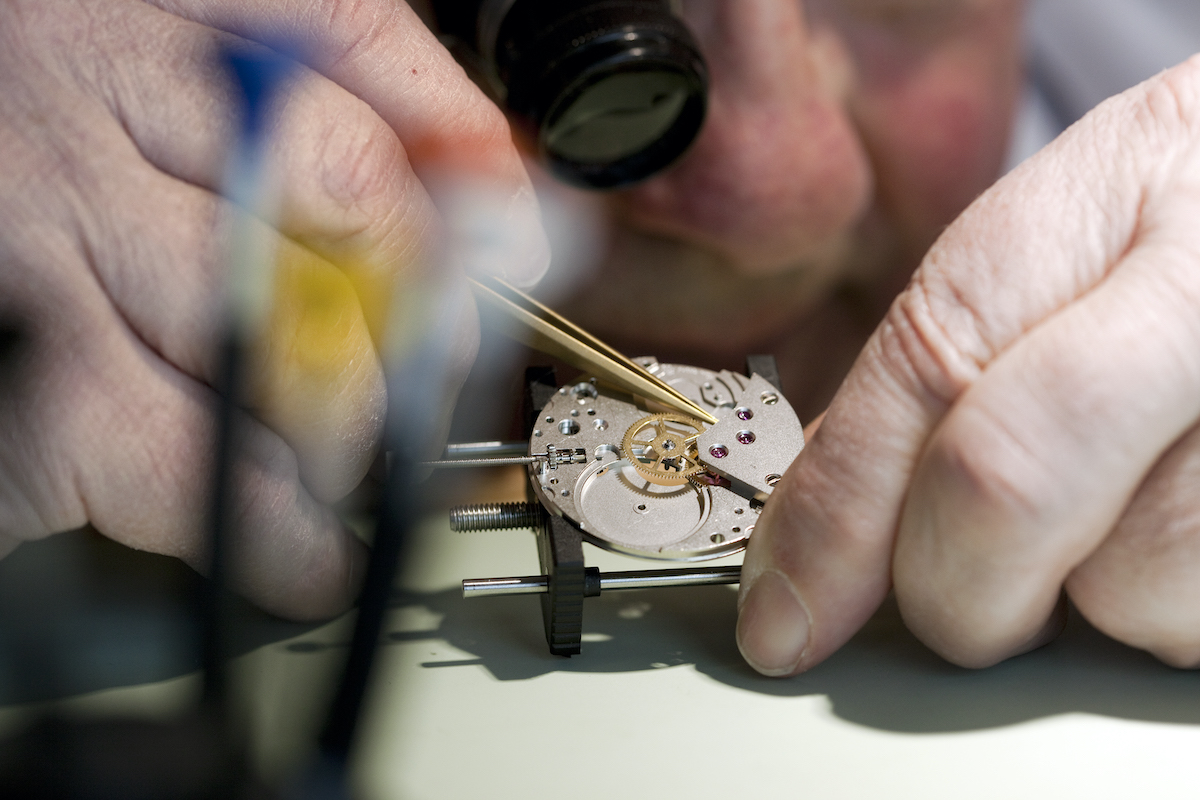
As the intellectual challenge yielded to the physical ones of vision and steadiness of hand, I barely dared breathe for fear of inhaling a microscopic screw, as I tried to grasp it with tweezers and peel off the onion layers of the watch. How on earth, I asked myself, did those farmers in the Jura, with their calloused hands and pitchforks, ever manage to collaborate with horologists to produce such refined watch parts during the fallow months of winter 300 years ago?
It must be one of the most counter-intuitive moonlighting activities in history – yet today, Jura remains a centre of watchmaking. As for my efforts, it is safe to say I am no natural. But Fabiano was the soul of patience. “Let’s go for lunch,” he said, as a spring went flying and I began to curse under my breath – and off we trotted to Brasserie Lipp.
Three courses and two glasses of wine later (“It can steady the hand,” Fabiano assured me), I was refreshed and ready for the part I had been looking forward to: designing and assembling my own watch. Initium offers four sizes of case to choose from – 33mm and 42mm (automatic), and 42mm and 48mm (manual winding) – each size available in various tones. In addition, each case accommodates a range of possible dials, hands, and flanges – not to mention dozens of straps in a rainbow of colours, different leathers and rubbers, which permits thousands of possible permutations to torment the indecisive.
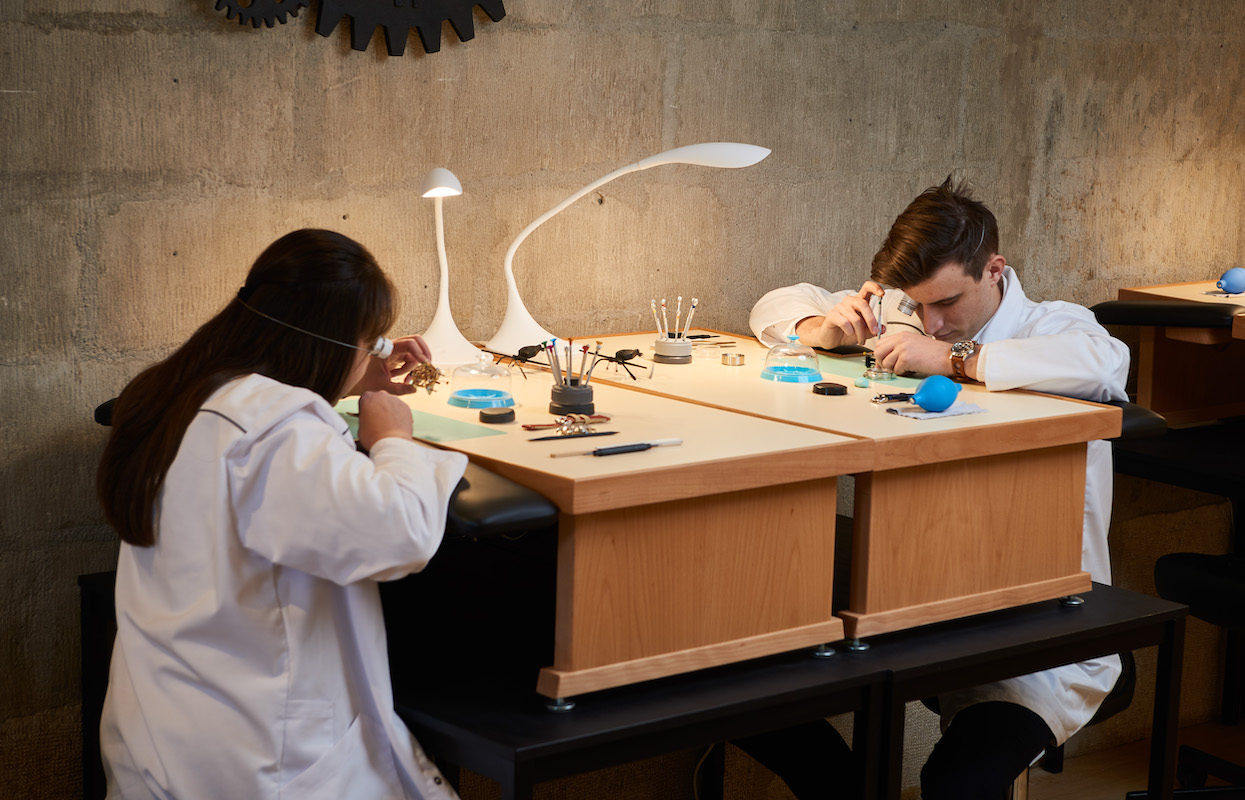
I could have spent a whole day procrastinating over components. In the end, I chose the least ornate from among half a dozen skeleton mechanisms (hence, no dial or date function), and added lightly silvered hands and flange to the gold-coloured movement to create a semi-skeleton watch.
The movement, of course, was not one I had tinkered with, but a new one that Fabiano regulated on a Chronocomparator, to ensure the balance spring had the correct tension (a task that involves setting the balance wheel to the right frequency, so the watch keeps correct time). After he fitted the flange, it fell to me to add the hands – first the hour, then the minute hand, both of which had to point exactly to 12, before being indexed with a hand fitting press. Fabiano then fixed the delicate second hand, enlarging its hole with a cutting broach to fit the pin, and fixing it with a hand-fitting tool before adjusting all three hands to ensure they were perfectly parallel.
While Fabiano mounted the movement in the case, aligned and locked it in place with casing clamps, and fitted the bezel and gaskets, I was tasked with cleaning the sapphire glass using miniature bellows, a microfibre cloth and alcohol, and checking there was no trace of dust in the movement. The glass was then fixed to the case, the working stem was removed, and I set about making a new one, snipping millimetre by millimetre, then filing down the last 0.5mm, until the desired length ( for my movement) of precisely 14.6mm was achieved. A new crown was glued on, the stem screwed in, rear glass secured using a friction ball, and voilà! My completed watch was ready for the waterproof test machine, which places the watch under pressure to ensure the crown, gaskets and case back are all proof against leakage.
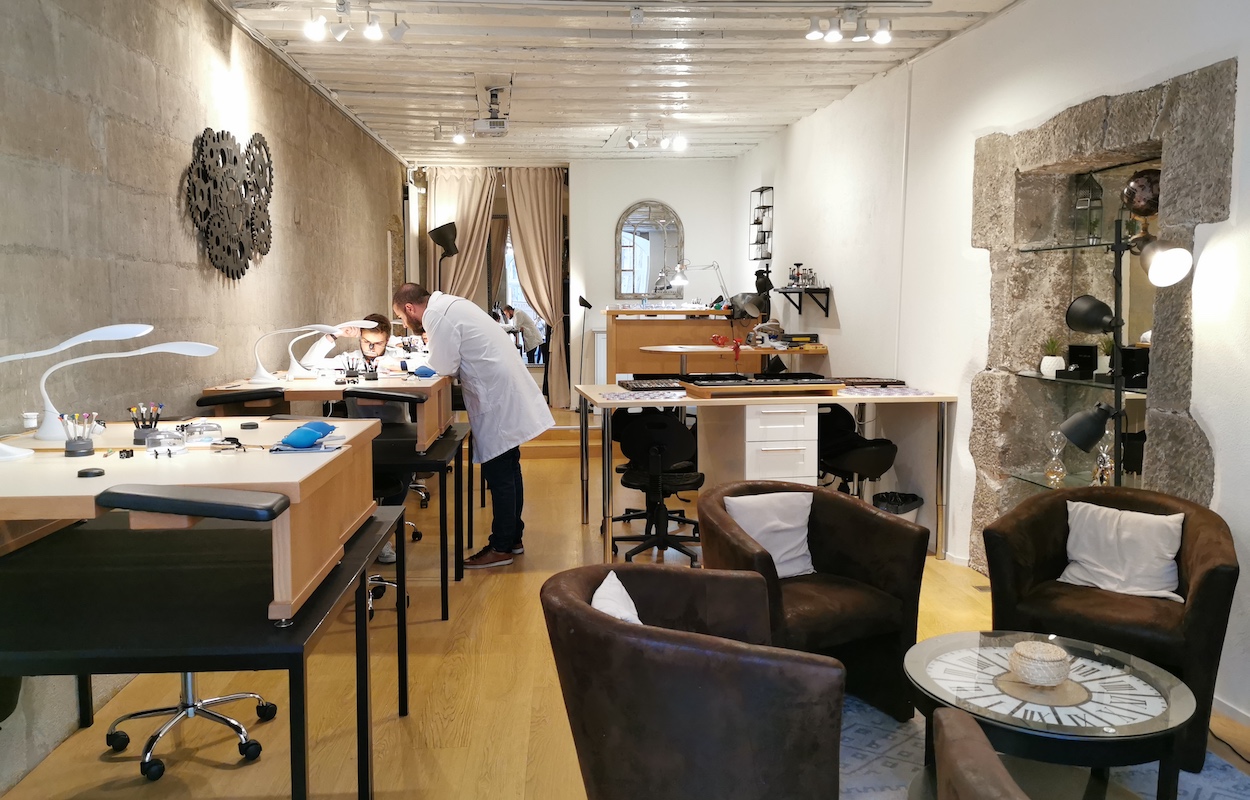
It passed the test: waterproof to 30 metres. My watch was now complete, bar further indecision over the colour and type of strap. The concentration was exhausting, and we celebrated completion, finally, with a glass of chilled Swiss wine.
Of course, this experience will not invest you with the skill of Gerald Genta overnight. But for any lover of horology, there can be no more original gift than a full day’s insight into this art. Pair that with a stay at the luxurious haven that is La Réserve, and you have the makings of a perfect weekend – and your new watch as a lasting memento.







